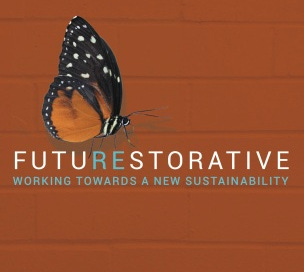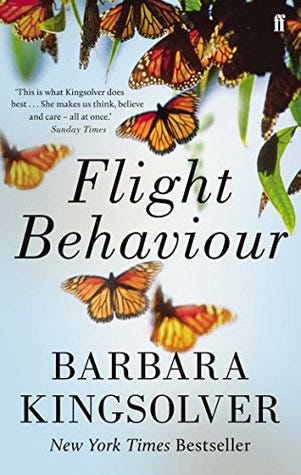Monarch Butterfly, Flight Behaviour
a symbol of biodiversity and fragility with potential for amazing transformation.
Having placed a monarch butterfly on the cover of FutuREstorative back in 2016, I have since been attracted to news and work relating to the wonderful ecosystem of this butterfly. And the more I read around the Monarch, the more Mary Oliver’s poem (Pay Attention, Be Amazed, Tell About It) resonates so well.
From inside FutuREstorative cover notes:
The monarch butterfly is considered an important and iconic pollinator, native to North America with a multigenerational migration journey that spans from Mexico to Canada.
From a population of more than 1 billion in the 1990’s, there is a grave danger of extinction within 20 years as the monarch’s sole food source milkweed, is virtually eradicated through chemicals and genetically modified agricultural practices.
The monarch butterfly is increasingly seen as a symbol of hope for a restorative future, championed, for example, by the David Suzuki Foundation through their #GotMilkweed campaign.
The classic butterfly effect (the movement of butterfly wings triggering storms on the other side of a continent) has become a metaphor for chaos theory describing the concept that small, seemingly insignificant actions can have larger, very significant consequences. And now the butterfly diagram, central to circular economy thinking, illustrates the potential to transform the built environment.
In many ways, the Monarch butterfly sums up the aim of FutuREstorative, as a symbol of biodiversity and fragility but with potential for amazing transformation.
Flight Behaviour
Why am I posting about the Monarch butterfly now? A long train journey from the UK to Spain allowed me time to read and become fully engrossed in the novel "Flight Behavior" by Barbara Kingsolver.
The novel centres around the Monarch butterfly's behavioural change, wherein instead of the entire population migrating to Mexico for winter as it has done for ages, climate change has caused them to relocate to the Appalachian region. The discovery of this unusual phenomenon serves as a beautiful and unsettling "miracle" that sets the stage and backdrop throughout the novel. The story explores the juxtaposition of climate change's impact on a very poor, highly religious community with low education levels and little awareness or understanding of climate change. In fact, within this community, climate change is viewed either as an abstract concept or, worse, as a communist conspiracy.
You never knew which split second might be the zigzag bolt dividing all that went before from everything that comes next.
I got the feeling it was like taking our current level of climate and regenerative understanding back 200 years and attempting to explain to the inhabitants of a small insular, agriculture-based Lancashire village. This in itself is an interesting thought exercise.
The novel depicts a cringeworthy scenario where a climate change activist (who along with many others from around the world has been attracted to the Monarch butterfly site) lectures the main character, Dellarobia, about ways she could reduce her carbon footprint. The activist suggests buying fewer clothes, replacing appliances less frequently, and flying less often. However, they fail to realize that Dellarobia already wears second-hand clothes, has never flown on a plane, and finds the very notion of replacing appliances bizarre and economically impossible given her circumstances. An extended-family computer serves as a portal to another world that slowly introduces climate and environmental awareness into the community.
I came across Flight Behaviour via the informative Five Books site, where it was recommended by James Bradley
Kingsolver’s novel explores how two awarenesses of the world – religious and scientific – are perhaps not as far apart as they seem to be.
“What was the use of saving a world that has no soul left in it?”
Yet in a way one of the things that’s most compelling about Flight Behaviour is that something happens in the final pages that moves the novel out and away from the careful realism of the earlier sections. At one level it’s another miracle, book-ending the miracle of the butterflies’ arrival at the book’s beginning, but it’s also a literal expression of the way everything we think of as permanent, even narrative, is destabilised and swept away by climate change.
'One of the best books about climate change.' NAOMI KLEIN
On Climate Fiction
Climate fiction writing of this quality and nature is vital. Kingsolver brings us central into the story, we feel for the positions taken by the characters, and we feel the way small climate disruptions to natural cycles impact both at a global scale and in local communities. And we feel all the unsettling impact on individuals and their relationships with each other and their environment.
As mentioned many times on this blog, in other writing and presentations, we need to move from asking what the future, what good will look like - but what the future and good will feel like’ We will be part of the future we create, design, influence and work for - not just passive observers.
And as author James Bradley comments
The best fiction allows us to hold ideas in our heads about time and space and causality and connection that are difficult to articulate in other ways. It helps its readers engage with dangers and possibilities that are at the very edge of imagination
(*) FutuREstorative is available via the RIBA Bookshop site




